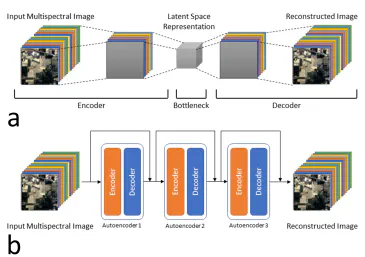Remote Sensing Framework for Geological Mapping via Stacked Autoencoders and Clustering
Apr 2, 2020·,,,·
1 min read
Sandeep Nagar*
Ehsan Farahbakhsh*
Joseph Awange
Rohitash Chandra
 Image credit: Unsplash
Image credit: UnsplashAbstract
Supervised machine learning methods for geological mapping via remote sensing face limitations due to the scarcity of accurately labelled training data that can be addressed by unsupervised learning, such as dimensionality reduction and clustering. Dimensionality reduction methods have the potential to play a crucial role in improving the accuracy of geological maps. Although conventional dimensionality reduction methods may struggle with nonlinear data, unsupervised deep learning models such as autoencoders can model non-linear relationships. Stacked autoencoders feature multiple interconnected layers to capture hierarchical data representations useful for remote sensing data. We present an unsupervised machine learning-based framework for processing remote sensing data using stacked autoencoders for dimensionality reduction and k-means clustering for mapping geological units. We use Landsat 8, ASTER, and Sentinel-2 datasets to evaluate the framework for geological mapping of the Mutawintji region in Western New South Wales, Australia. We also compare stacked autoencoders with principal component analysis (PCA) and canonical autoencoders. Our results reveal that the framework produces accurate and interpretable geological maps, efficiently discriminating rock units. The results reveal that the combination of stacked autoencoders with Sentinel-2 data yields the best performance accuracy when compared to other combinations. We find that stacked autoencoders enable better extraction of complex and hierarchical representation of the input data when compared to canonical autoencoders and PCA. We also find that the generated maps align with prior geological knowledge of the study area while providing novel insights into geological structures.
Type
Publication
Advances in Space Research Journal, 74(10)
Click the Cite button above to demo the feature to enable visitors to import publication metadata into their reference management software.
Create your slides in Markdown - click the Slides button to check out the example.
Add the publication’s full text or supplementary notes here. You can use rich formatting such as including code, math, and images.